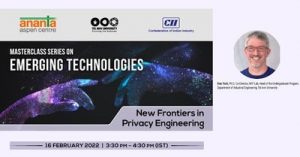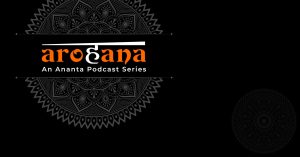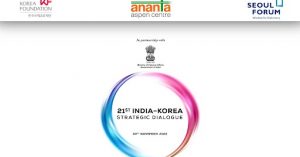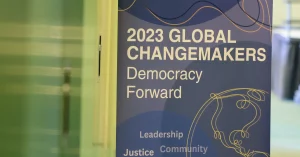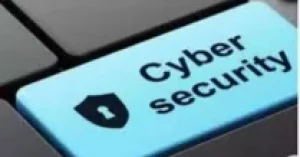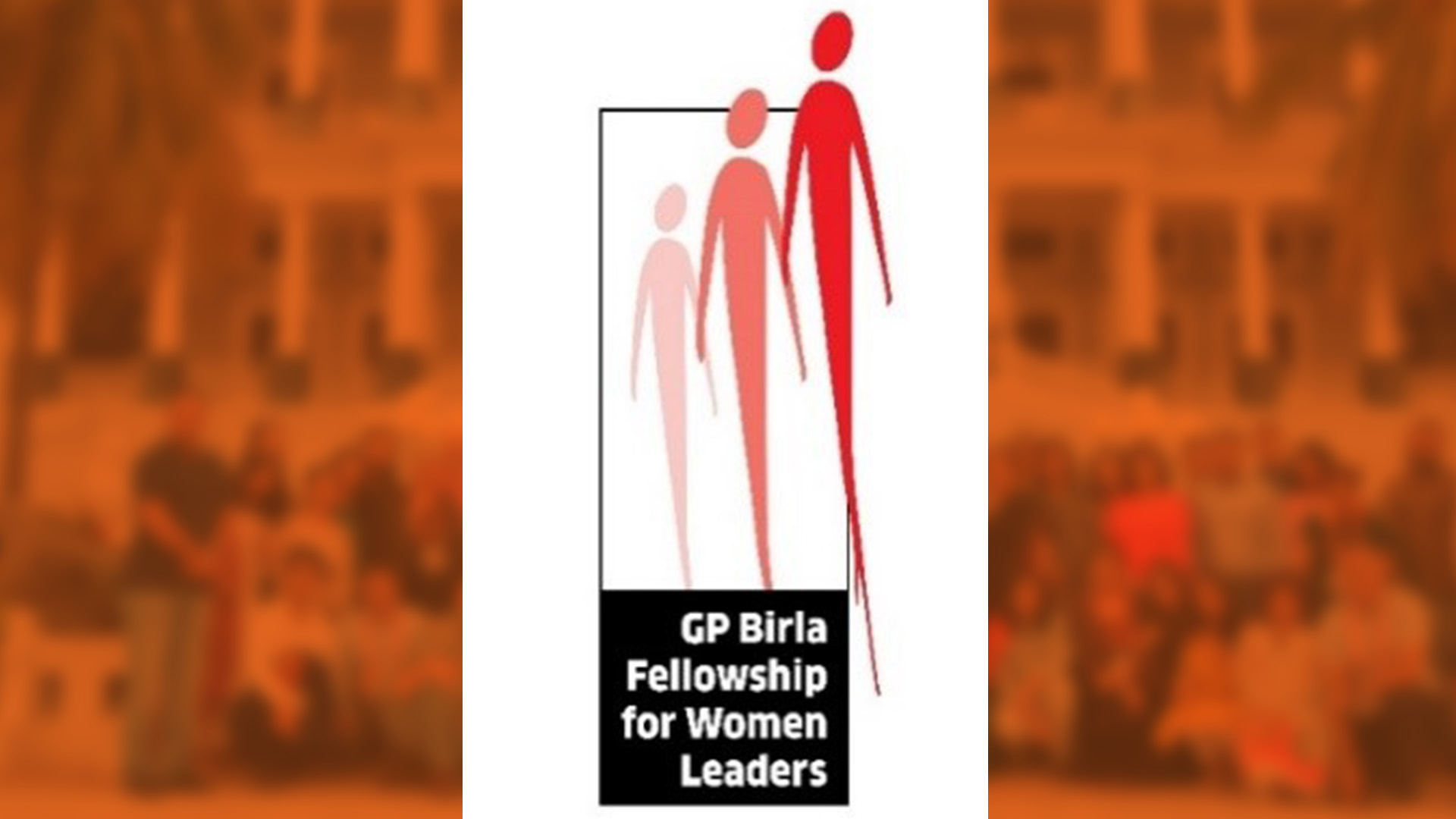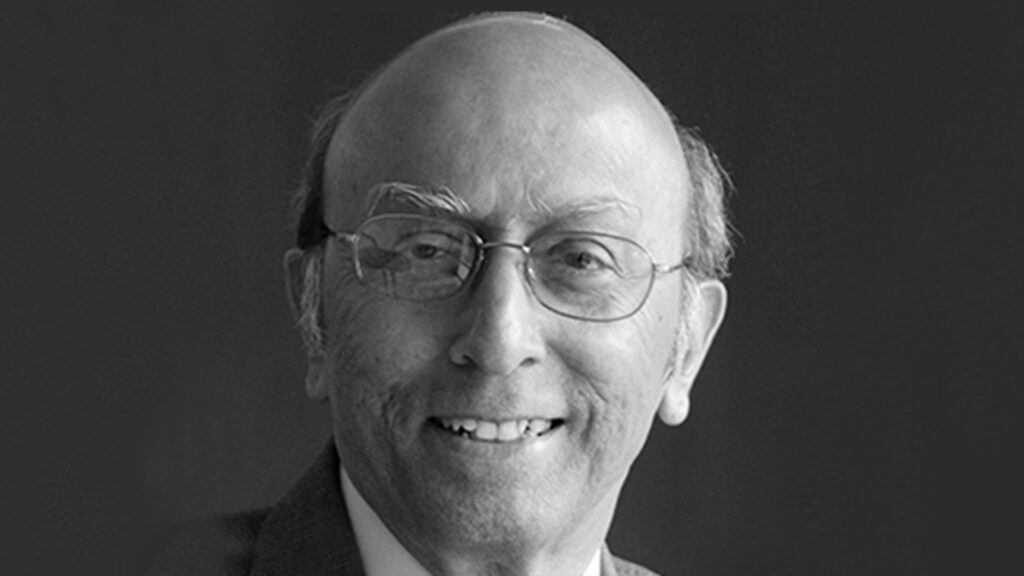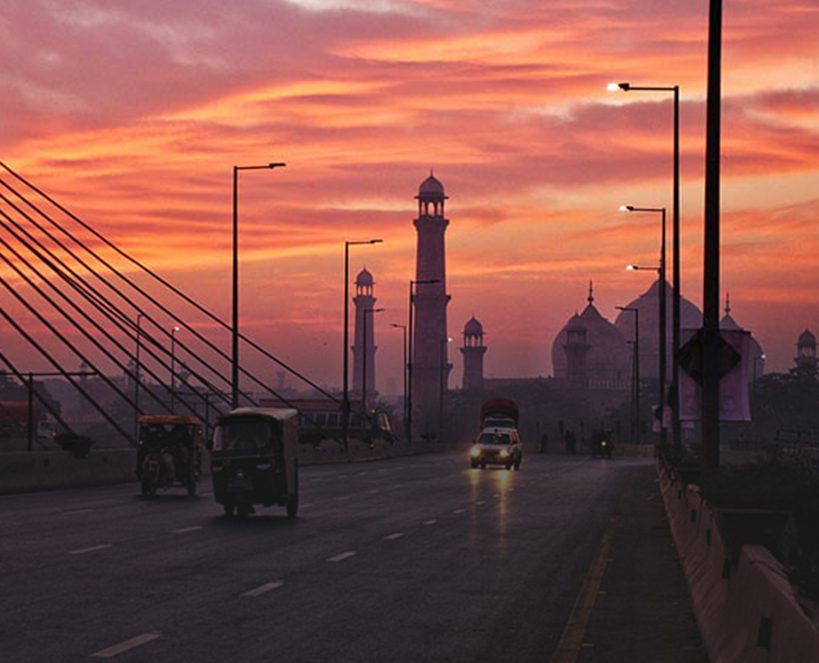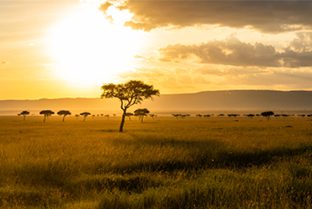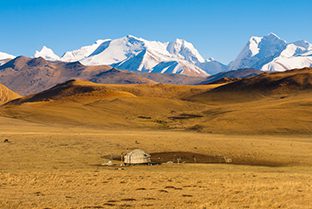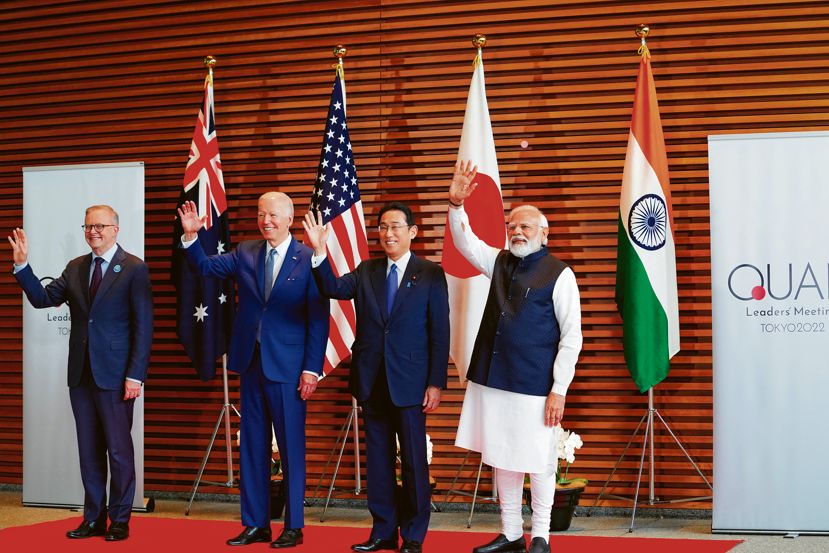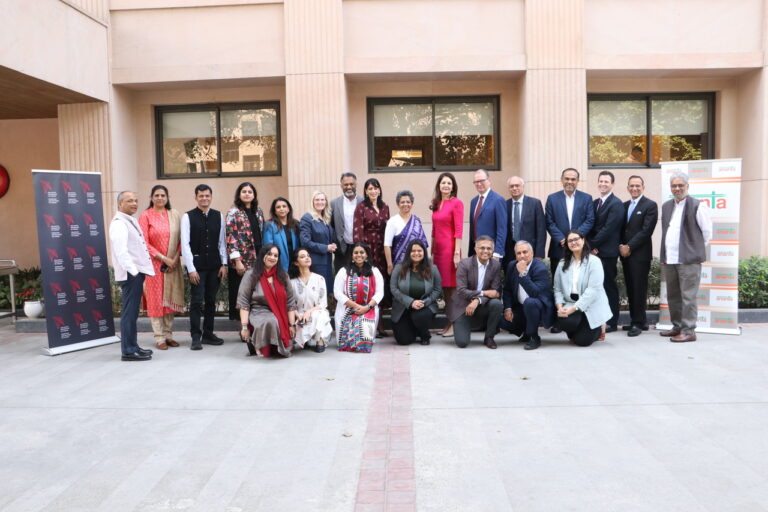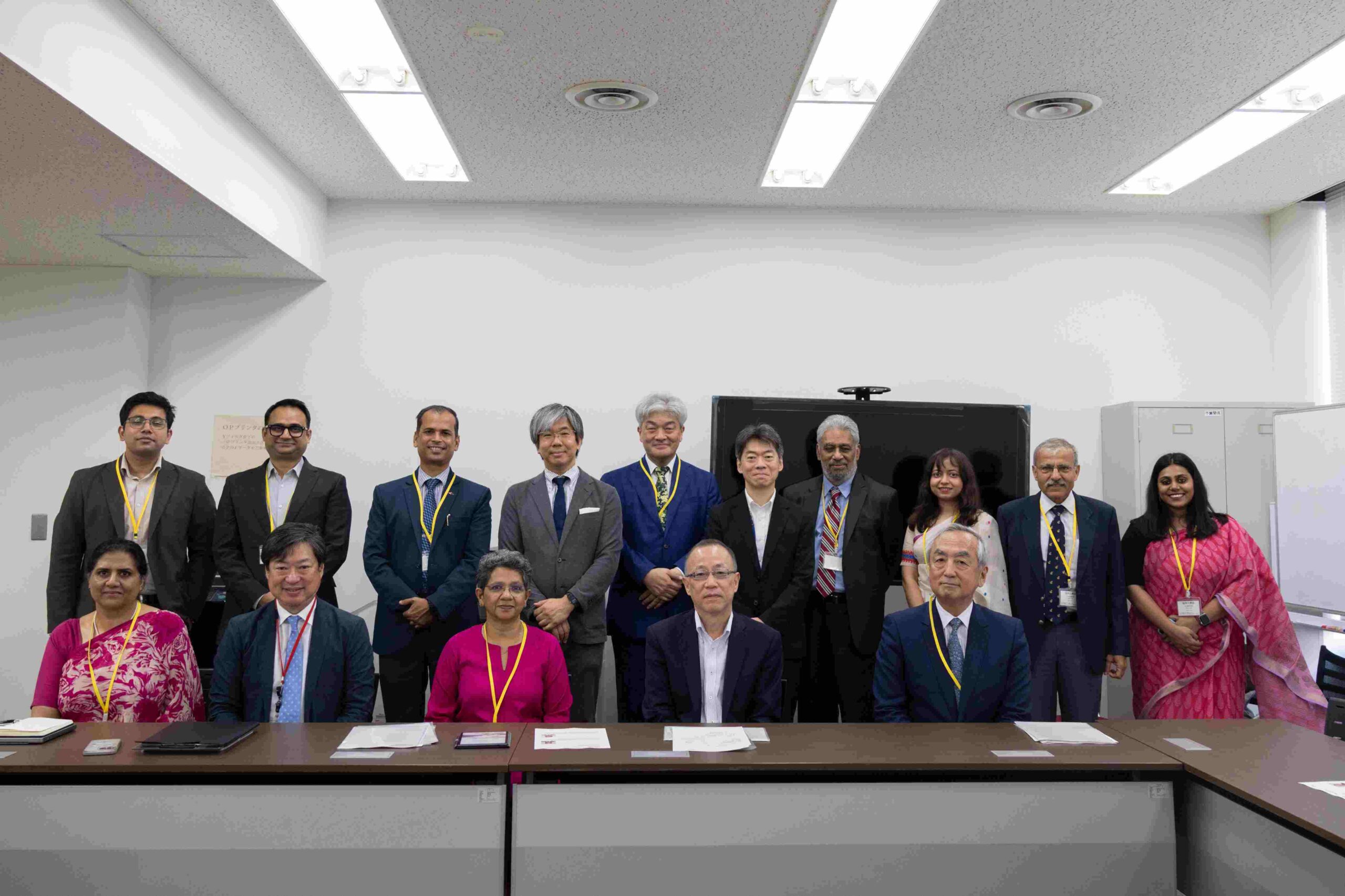FELLOW SPEAK
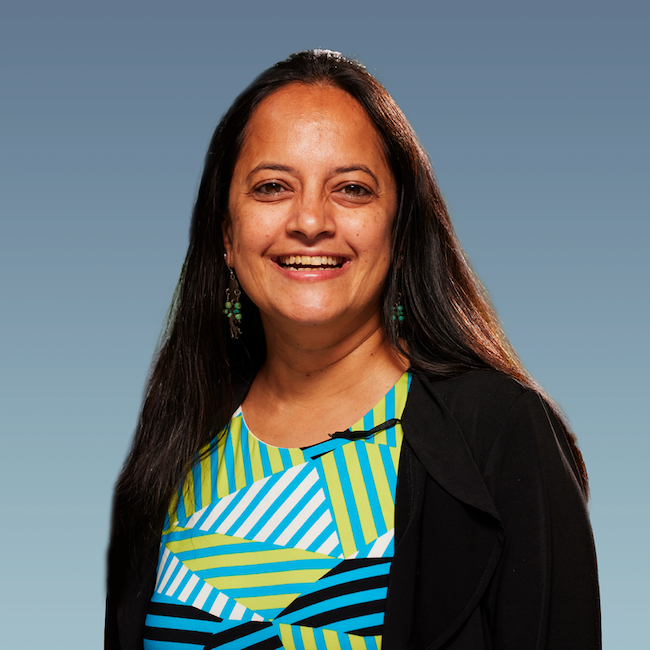
“Leadership isn’t just about building things — it’s about being someone worth following.”
Krithi K. Karanth, CEO, Centre for Wildlife Studies, McNulty Laureate 2025, Kamalnanyan Bajaj Fellow, Class 8
To start from the beginning, what was it like to grow up in a house where your father was himself a Tiger Biologist?
I grew up in a household that deeply valued science, both my parents are scientists. My father, Dr. K. Ullas Karanth, is a tiger biologist and conservationist, and my mother, Dr. Prathibha Karanth, is a speech pathologist. I had an amazing childhood watching animals with my father and being exposed to nature from a very young age. I saw my first tiger when I was just two years old. Growing up, I got to radio-track big cats, examine scats, walk line transects, and set up camera traps with him. He took me to several wildlife parks across India and for 17 years of my childhood, I spent hours simply watching animals. This was an extraordinary gift, one I truly came to appreciate only much later in life. I also watched him go through the scientific process: how he sought knowledge, framed research questions, collected and analyzed data systematically to publish scientific papers. That approach instilled a deep sense of curiosity in me and I was fascinated by the scientific process.
From that childhood, was there any incident that impacted you in a way that you decided that working with wildlife was your passion, and later, your profession?
I distinctly remember not wanting to follow in my father’s footsteps because I had seen just how challenging and volatile this field could be. I wanted to become an architect or a lawyer. But my love for biology was inherent, and it eventually brought me back. While pursuing my master’s at Yale University, I found myself in Bhadra Wildlife Sanctuary conducting field research for my thesis. In the first few days, I met with an accident that took time to recover from, but I was determined to complete the research project I had been planning for months. Redesigning and adapting my original research led to me hobbling back to do fieldwork, collecting data, interacting with people, and finishing the project. This first independent research project taught me that resilience, hard work, and determination can overcome all odds. Though physically painful and mentally challenging, those three months in Bhadra reignited my childhood passion for wild nature, and I decided to become a conservation scientist. I realised I had inherited not only the passion for research but also the drive to use it in service of society, something I have to thank both my parents for.
You have said that after your stint in the United States, you realized that scientific data and traditional conservation models alone were not enough to support communities living closest to wildlife. Could you please elaborate on this?
I spent the first 15 years of my career purely as a scientist, conducting research across India on a variety of wildlife ecology focused questions, as well as exploring the human dimensions of conservation, from human–wildlife conflict, wildlife tourism, and landscape connectivity for wildlife, to understanding hunting, and the trade. Through this work, I realized that many scientists tend to operate in silos, with the ultimate goal of publishing cutting edge scientific papers, but without translating that science into effective policy or on-ground implementation. In 2015, I made a conscious decision that the science I wanted to pursue had to have direct, real-world relevance, whether by influencing policy or driving effective conservation on the ground. Since then, all of the work I have led, and now much of the work being done at CWS by other scientists, focuses on this intersection of action research and conservation. I believe this is the only way we can address the complex issues facing wildlife science and conservation today.
You have often spoken of and worked towards finding solutions to the Man-Animal conflict – Stating that one needs to take care of both. Could you share your thoughts behind this and the kind of solutions you are able to identify, such as Wild Seve.
We have worked across India on human-wildlife interactions. Our research showed that, fortunately, the vast majority of conflict occurring around wildlife reserves in India, at least 80%, is crop and property damage. Livestock predation affects about 10–15% of households, while human injury or death accounts for less than 5% of cases.All of this makes India high-conflict country with at least 100,000 documented incidents from many states and annually reported to the government each year, but based on our field surveys, we estimate the real number is closer to 300,000. People file for ex gratia compensation with the government, and one key insight from our work was that, unlike many other countries, the Indian government actually sets aside funds to support these claims. However, people often found the process of accessing this support frustrating and complicated.
To address this gap, in 2015 we launched Wild Seve, our first conservation program at CWS. The program operates toll-free numbers in three states, covering thousands of villages around 23 wildlife parks. People can call us if they experience a conflict incident, and our field team will visit the site, document the loss, and help file and track the claim. Over the past 10 years, Wild Seve has grown from two parks in Karnataka to, by the end of this year, 30 parks across Goa, Karnataka, Kerala, and Tamil Nadu. We have assisted in filing almost 30,000 claims. We continue to collect rigorous data and publish research on human–wildlife conflict, impact of mitigation efforts and the impact of Wild Seve, while directly helping communities. To me, this is the perfect example of science and adaptive conservation management working together.

In an Indian context, what is the biggest challenge you see in being able to reduce this Man-Animal confrontation? (Policy/Social/Economic or anything else)
I think the biggest challenge today is that, unlike most other countries, India has less than 5% of its land protected for wildlife. High densities of people living adjacent to most of our wildlife reserves. Many large mammals have long established migratory paths that take them beyond these wildlife reserve boundaries across seasons and years. When elephants or tigers move out of our parks, they inevitably come into direct contact with people, which can sometimes lead to conflict.This is a major issue because wilderness areas in India are not expanding, and as a result, the frequency and intensity of human–wildlife interactions are increasing every year as human pressures grow affecting connectivity and movement pathways for wildlife. It is therefore critical that we find multiple ways to manage these interactions and this is exactly where researchneeds to be paired with active management.
You have won a Rolex Award for Enterprise Laureates, been an Eisenhower Fellow, recognized as a WILD Innovator, and featured by the Government of India’s Invest India, apart from numerous other accolades. What was the trigger in being part of Ananta Aspen’s Kamalnayan Bajaj Fellowship?
I have been very privileged to be part of many fellowships, but if there is one that was truly transformative in my life, it is the Ananta Aspen Kamalnayan Bajaj Fellowship. It came to me at a point when I had begun rebuilding CWS, an organization with a 35-year legacy, almost from scratch in 2018. The past seven years have been an extraordinary journey, with both remarkable highs and significant lows as I had to nurture this organization’s legacy while charting a new path forward. The fellowship grounded me, reconnected me to my core values, and helped me build resilience and grit in the face of the constant challenges as a leader running an organization. It has given me enormous strength and reinforced my courage and determination to continue on my life’s mission to conserve wildlife and wild places in India and globally.
Staying with the Fellowship, during this period, what was the most significant aspect of the experience for you, and would you endorse it for others?
I would absolutely endorse it for everyone. If there were a fellowship I could give to everyone in my life, especially in my professional circle, it would be this one. The “Aspen magic” is real and can transform people’s professional and personal lives. As you progress in your career, you inevitably face many failures alongside some successes, and a fellowship like this helps you recentre and refocus on your core purpose. I have been very determined about my passion for wildlife and wild places for 27 years, but the experience also taught me to be kinder to myself and to those around me. In many ways, it has helped keep my focus on the long term, rather than getting caught up in the daily challenges that come my way.
Could you share how you see the values-based learning approach of the Fellowship being incorporated into your work in wildlife conservation?
The way the fellowship is designed, especially how it provokes deep, values-based conversations, has directly influenced my work at CWS. We have adapted these approaches, whether it’s using a piece of poetry or a story, to spark similar discussions within the organization. For the past four years, we have brought together 25 emerging leaders from across CWS, representing all levels and different focal areas, and held an Aspen-style reading and discussion, moderated by different people each time. I feel this has played a significant role in building strong bonds among colleagues and strengthening connections across the organization.
What kind of person, in your opinion, is best suited to benefit from the Fellowship?
I think this fellowship is best suited for people who are building and leading organizations. There needs to be a sense of responsibility, accountability, and maturity in the role a person holds for them to truly benefit from the experience. It also works best when participants are willing to give back to the fellowship community, and I hope to see even more of that among Aspen India Fellows. I believe there is tremendous scope for greater collaboration. I have been fortunate to work closely with Vikram Vaidyanathan, who is in Class 9 KBF fellow and also serves as CWS’s Managing Trustee. In our case, we began working together before the fellowship, continued through it, and have carried that collaboration forward beyond it. I see so much potential for the incredible capacity of the India Fellows to work together, and I hope more of us begin doing so.
As more fellows from the Ananta Aspen programme come into leadership positions in industry and governance, do you see a change taking place in the way their organizations would function in the future, and would they begin looking at wildlife differently?
I think the fellowship is a great equalizer in that it brings people together and builds a strong sense of community. From there, it’s up to each individual to carry those values into the world, whether in government, the corporate sector, or civil society. That said, we still have a long way to go before there is widespread consciousness about why India’s rich natural heritage and wildlife need to be protected. Too many environmental conversations remain tokenistic, and I would like to see far deeper, more meaningful discussions take place.
What is your vision for Indian Wildlife in 2047?
I think India has done a remarkable job of recovering wildlife since our Independence. In many parts of the country where wildlife has been decimated, we have succeeded in bringing species back. However, in many other places, wildlife is still in deep trouble, especially outside forested systems. Grasslands, wetlands, freshwater, and oceanic ecosystems receive very little attention, and the species that depend on them remain vulnerable. By 2047, I hope that wilderness and wildlife, which today occupy only a small part of India’s collective imagination, will have a much greater presence. Achieving this will require many people working together, across sectors, to protect these ecosystems and the species within them.
On a personal note, what is your favourite way to unwind and enjoy some personal time?
My favourite thing to do is travel. I have been fortunate to visit 50 countries so far, and I’m always looking for where I can go next, whether it’s for wildlife, food, art, history, or culture. Travel is, without doubt, my favourite way to unwind. I also love to read and dance.
To conclude, what does the 2025 McNulty Prize mean both for you and for the cause of Wildlife Conservation in India?
I was very honored and proud when CWS and I were selected for the McNulty Prize. Among the 60 Aspen Fellows who have received this honour, there had never been anyone working on “non-humans”, so I was deeply grateful that we were the first wildlife organization globally selected for this honor. We need many more voices in this space. I believe there are exciting opportunities for conversations and collaborations across people and organizations in different sectors, because so much of our work touches education, health, and communities. I am genuinely excited to see how the McNulty Foundation and Aspen community, both globally and within India, can help CWS advance its mission to protect our natural heritage.

Leading with Values, Fuelled by Purpose
Shakti Kaur, COO & Co-Founder, Anuprayaas Solutions, GP Birla Fellow, Class 4
When values become instincts
For me, leadership begins with values. My core values—ethics and integrity—act as non-negotiables, both personally and organizationally. Leading with values means knowing what lines cannot be crossed and ensuring that my team is equally clear on this. Everyone is trained and aligned so that these principles become their instinctive response.
We even document our values, reflecting on real-life situations where we faced moral dilemmas and the decisions we made. Sharing these experiences with teams and new joiners helps embed them deeply, weaving values into the very fabric of our organizational culture.
“Our values are not just words on paper; they are practiced until they become instinct.”
A fellowship of reflection
This fellowship gave me a safe space for self-reflection and the courage to examine my own thought process. Engaging with remarkable peers from diverse backgrounds, enriched by readings and discussions, broadened my perspective and increased my tolerance for varied viewpoints.
It clarified not only my current leadership style but also the path I want to pursue—with practical steps to get there. By creating a structure that encouraged vulnerability while offering security, it helped me let go of authority and micromanagement when objectives were clear. I came away a more effective and empathetic leader, and perhaps more importantly, a more humbled human being.
The thrill of problem-solving
My enthusiasm at work is fuelled by a love for building something from scratch, solving problems, and venturing into uncharted territories. While the impact my organisation creates is immensely rewarding, I’ve realized my true passion lies in problem-solving and innovation. Each challenge is an opportunity to refine processes, grow, and develop not just the organisation but myself too.
Navigating leadership challenges
Of course, challenges persist. In a small team, roles and leadership responsibilities often blur. To address this, I’ve worked on creating clearer boundaries—empowering my team to act independently and approach me with intention.
A shift toward digital reporting systems, and moving away from constant unannounced office drop-ins, was not easy at first. But over time, the team has adjusted and begun to respond well, finding new rhythms of autonomy and productivity.
“Clear boundaries create room for true independence.”
Lessons from the early years
Looking back, if I had the chance to begin anew, I would have positioned my organisation as a social enterprise right from the start. In the early years, passion drove us, but I struggled to view our work through a business lens. It took me years to embrace revenue generation with pride and to recognize that financial sustainability is just as critical as social impact.

An unexpected journey
At first, I expected traditional classroom-style leadership training, but the readings booklet left me unsure of what to anticipate. This fellowship, however, turned out to be an extraordinary journey—one that intertwined world history, modern issues, and, most unexpectedly, my own thought process.
The highlight was discovering how I think and respond in different situations. The program’s beauty lies in its design: every participant learns and engages at their own pace, carrying away lessons that resonate most personally. In the end, it sharpened my tolerance, moral compass, and leadership style in ways no traditional program could have.
Achievements that matter most
As I look back on 10 years of building a social startup as a first-generation entrepreneur, I feel proud of how far we’ve come. My organisation has worked tirelessly to bring accessibility to Indian railway stations and trains—partnering with the government to make over 130 stations, hospitals, and heritage sites more inclusive.
Awards and recognitions—like the NDTV Infra Shakti Awards 2024 nomination, the NCPEDP Mphasis Universal Design Award 2023, or being featured in The Invisible Majority and UN publications—are humbling milestones.
But what stays with me the most are the unexpected phone calls. Individuals with disabilities, complete strangers, calling just to say thank you because they can now rely on facilities at railway stations.
“The deepest satisfaction lies in knowing someone you’ve never met feels seen and supported.”
Their gratitude—that is the real achievement. That is what makes all the hard work worthwhile.
- Nominated for “NDTV Infra Shakti Awards 2024”
- Received the “NCPEDP Mphasis Universal Design Award 2023” in the Organization Impact category
- Featured in the Amazon bestseller “The Invisible Majority” by C.K. Meena and V.R. Ferose in 2021
- Highlighted in “Demystifying Accessibility in Built Infrastructure 2021”, published by the Ministry of Social Justice and Empowerment, Government of India
- Featured in “Disability at a Glance 2019” by ESCAP, United Nations

A Bond through Shared Vulnerability!
Proshmit Chaudhuri on the aspect of the Emerging Leaders Fellowship that impacted him most
For me, the most significant part of the Emerging Leaders Fellowship (ELF) was the people. 26 of us, all strangers from different parts of India, ended the week like family — deeply bonded through shared vulnerability, intense discussion, and late-night laughter. The fellowship created a space where we weren’t just learning from texts and facilitators, but from each other’s lives.
From debating liberty on a bus ride to rehearsing for the play at 2 a.m., everything was magic. But one moment I’ll never forget – sitting with someone I barely knew at the start of the week, and by the end of our conversation, we both shared things we hadn’t told anyone in years. ELF created that kind of space — safe, powerful, unforgettable.
ELF isn’t just a program — it’s a mirror, a compass, and a launchpad all rolled into one. It made me ask why I want what I want. I’ve always had big goals, but ELF grounded me. It made me realize that leadership isn’t just about building things — it’s about being someone worth following. My future goals haven’t changed, but now they feel more intentional, more people-centric.
Based in Goa, Geology student Proshmit Chaudhuri is passionate about space, earth systems, and future technologies, and hopes to build a career at the intersection of geology, planetary science, AI, and sustainability




